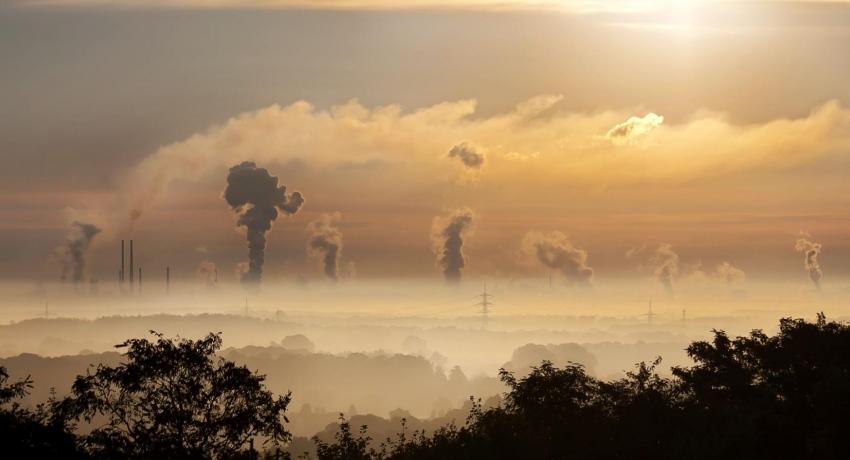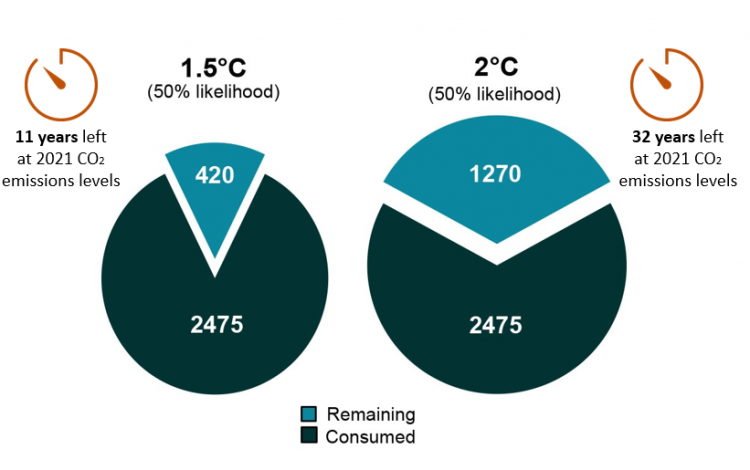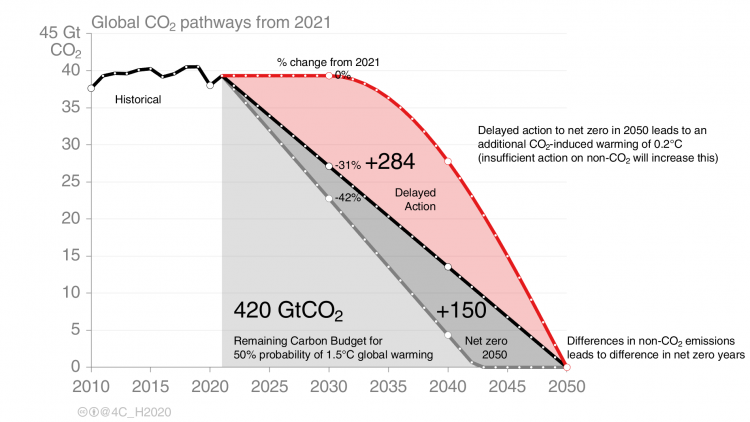The world is not on track to keep warming below 1.5°C, and immediate action is needed, according to the 4C Carbon Outlook, just released.
The 4C Carbon Outlook, released in November 2021, is warning that stronger climate policies are needed to trigger the necessary short-term action to reduce CO2 emissions sufficiently in the coming decade to keep the option for 1.5°C alive.
Post Covid-19 lockdown
No lessons seem to have been learnt from the COVID-19 pandemic, as the global fossil CO2 emissions are set to rebound to almost pre-pandemic levels in 2021.
Compared to last year, where a dramatic decrease in activities and emissions was experienced because of confinement measures in response to the COVID-19 pandemic, the emissions in 2021 are set to increase by about 4.9% (1.6 GtCO2). This abrupt increase is comparable to that seen in 2010, as the world was recovering from the global financial crisis of 2008-2009.
The 4C Carbon Outlook’s section on CO2 emissions drivers reports the analysis by fuel type, sector and country. Recovery plans and climate policies have to be urgently adapted worldwide to reduce emissions on the path to net-zero emissions by 2050 and limiting global warming in line with the Paris Agreement goals.
Which pathway are we choosing?
Globally, we are far from a 1.5°C compatible trajectory. There is no nation with sufficient policies in place to reach this goal. The results on the remaining carbon budget presented in the 4C Carbon Outlook clearly show the need for immediate action.
The 26th Conference of Parties (COP26) ended with still insufficient commitments. In the best case scenario, assuming all announced targets (net zero targets, long-term targets and 2030 NDCs) are met, we may keep temperature rise at 1.8°C, but no country has yet a short-term plan to implement those pledges. According to the NDCs that currently have an associated plan for 2030, we are heading to a warming of 2.4°C (these policy analyses are provided by the Climate Action Tracker and consider all greenhouse gas emissions).
How much CO2 emissions can our planet still bear?
The global CO2 emissions are expected to reach 36.4 billion tonnes of CO2 (GtCO2) by the end of 2021, according to the annual 4C Carbon Outlook, leaving us with a budget of merely 420 GtCO2 for 1.5°C warming and 1,270 GtCO2 before reaching 2°C warming.
If 2021 CO2 emissions levels continue, we may only have 11 years left before reaching 1.5°C warming (more details available in the 4C Carbon Outlook).
How far are we from zero CO2 emissions?
As CO2 emissions accumulate in the atmosphere and carbon removal options will only offset emissions partially , acting now to reduce emissions is crucial, as any further delay would lead to higher levels of CO2 in the atmosphere and higher temperatures.
The latest available science shows that CO2 emissions must be reduced by 1.4 GtCO2 every year on average in order to achieve net-zero emissions by 2050, comparable to the COVID-19-induced drop of 1.9 GtCO2 in 2020.
How fast we reduce our emissions also matters. If significant action for emission reduction is delayed until 2030, then more ambitious and challenging strategies will be needed between 2030 and 2050, and additional warming could be seen beyond the Paris Agreement goals.
“Ambitious 2030 commitments and year-by-year achievements are fundamental for reaching the 2050 objective, with less CO2 accumulated in the atmosphere and lower temperatures”, according to the recent 4C report.
About the 4C Carbon Outlook
The 4C Carbon Outlook is published once a year based on the latest Global Carbon Budget conducted by the Global Carbon Project, which involves 4C researchers and activities. It summarises the latest science for climate policy. You can download the 4C Carbon Outlook here.



